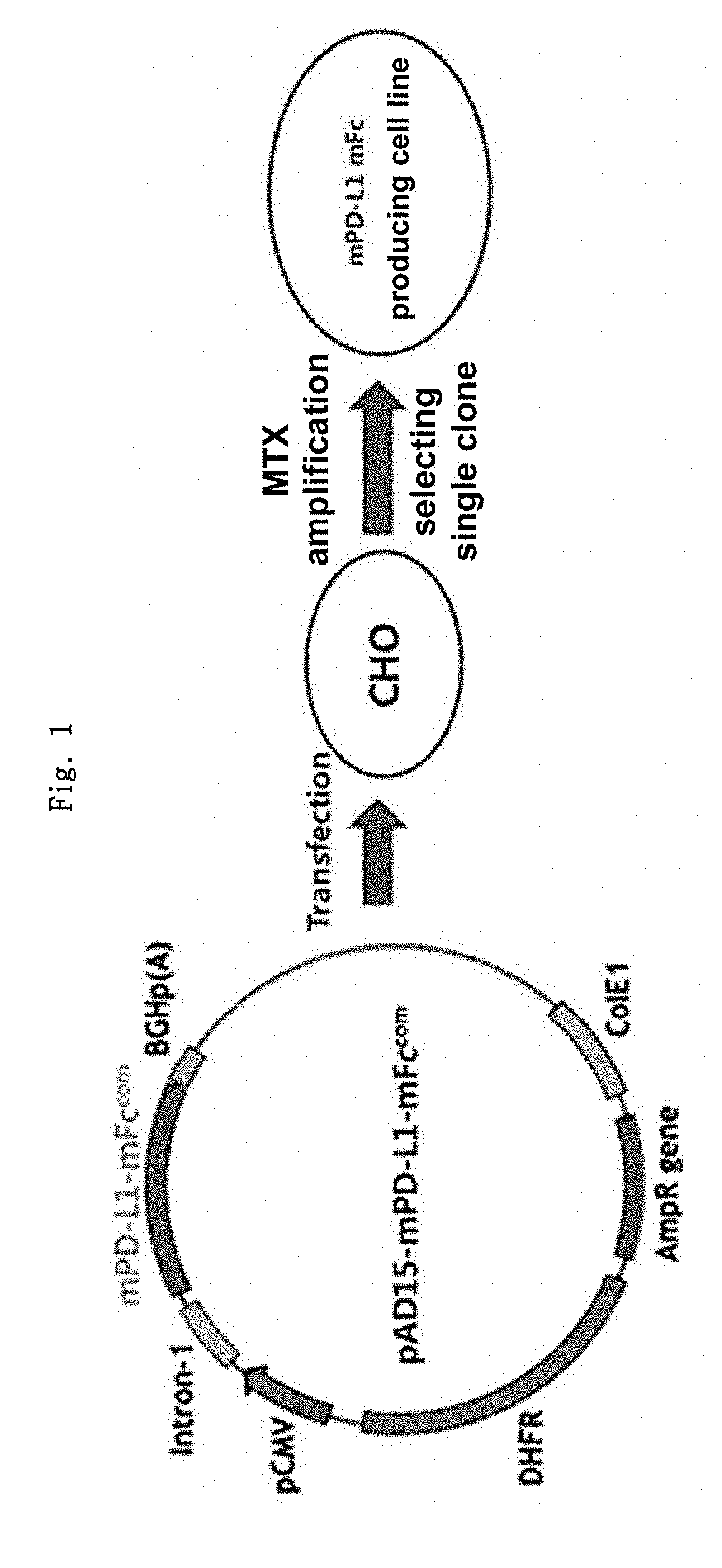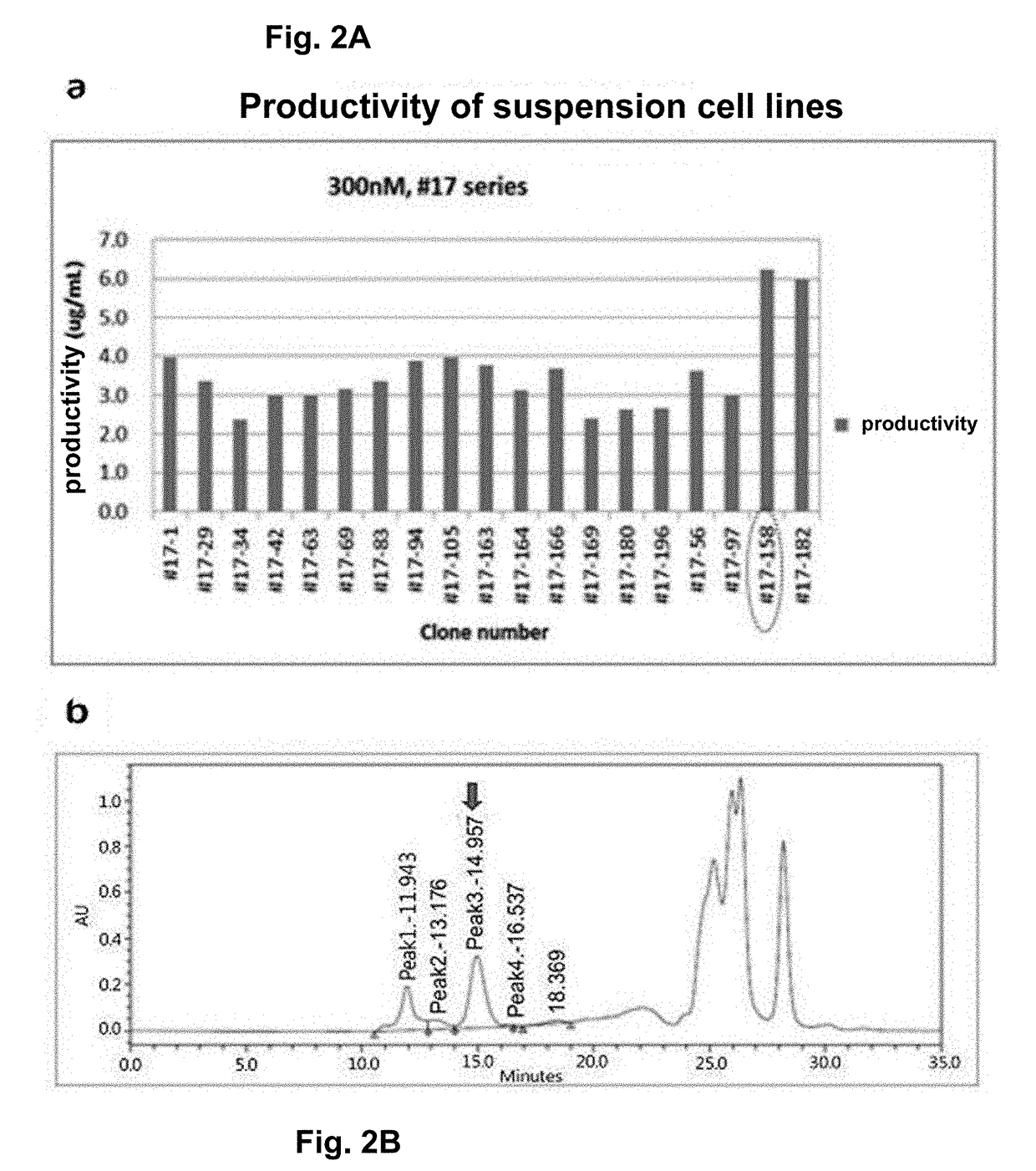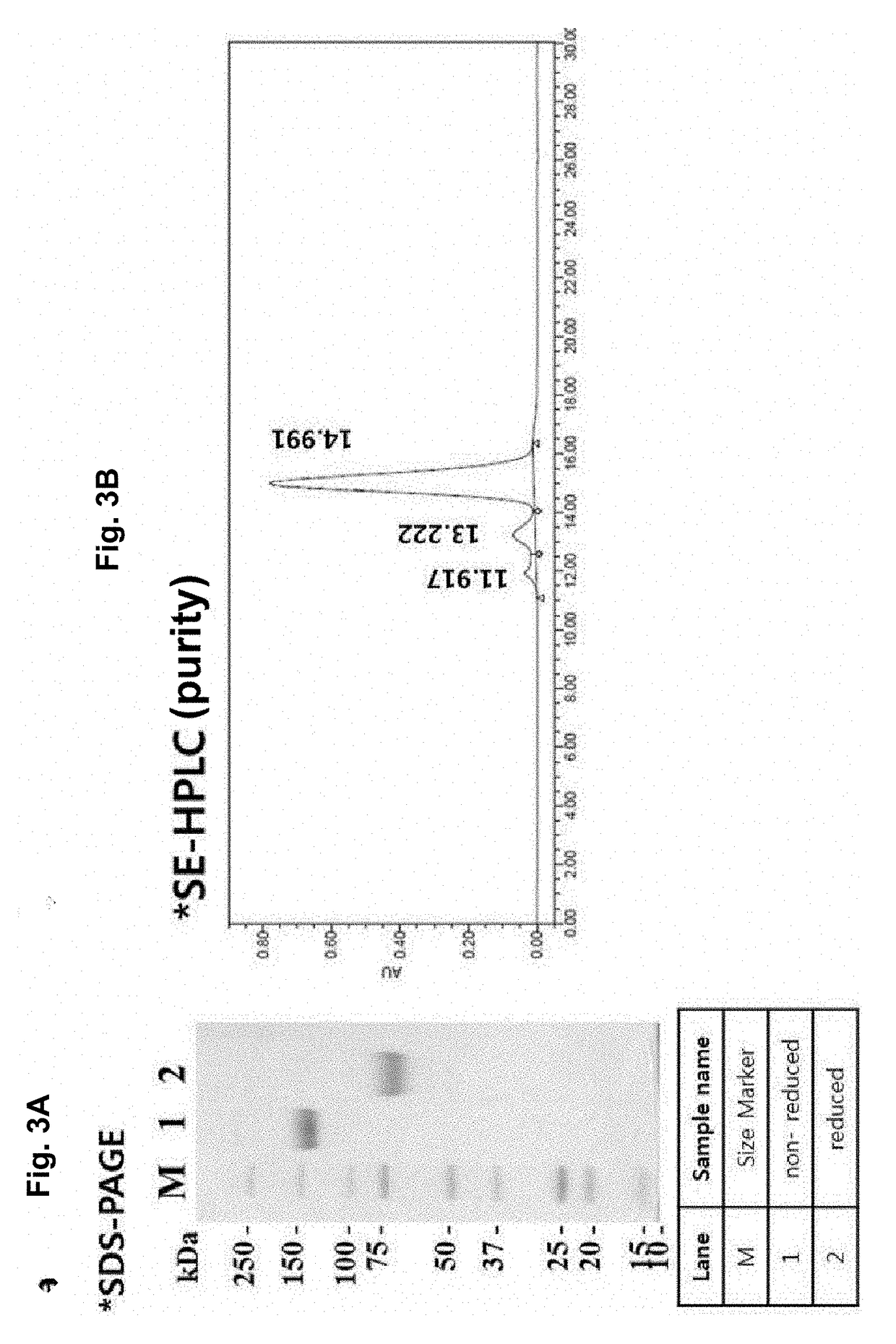Pd-l1 fusion protein and use thereof
- Summary
- Abstract
- Description
- Claims
- Application Information
AI Technical Summary
Benefits of technology
Problems solved by technology
Method used
Image
Examples
example 1
on of mPD-L1-mFc (Mouse PD-L1-Mouse Non-Lytic IgG2a) Gene Construct
[0155]Mouse PD-L1 protein (mPD-L1) and human PD-L1 protein (hPD-L1) have a sequence homology of about 70%. Thus, when human PD-L1 protein is repeatedly administered to a mouse, an antibody (anti-drug antibody, ADA) against the human PD-L1 protein might be developed, which could make it difficult to predict the accurate efficacy of the human PD-L1 protein, in some cases.
[0156]Thus, before an experiment was conducted using a human PD-L1-Fc fusion protein, the effect of a mouse PD-L1-Fc fusion protein was analyzed by an in vivo experiment in mice. Non-lytic Fc (hereinafter referred to as “mFc”) was constructed to provide a gene construct capable of producing mPD-L1-mFc, and a cell line expressing mPD-L1-mFc was constructed. The recombinant protein-expressing cell line was suspension-cultured, and the culture medium was collected, after which the recombinant protein was recovered by column purification. The in vitro and ...
example 2
n of mPD-L1-mFc Protein
[0159]To produce the mPD-L1-mFc (mouse PD-L1-mouse non-lytic IgG2a) protein (SEQ ID NO: 10) in large amounts, the target protein was separated and purified from the cell culture medium produced by the mPD-L1-mFc suspension cell line obtained in Example 1.
[0160]To purify the protein, the protein purification process was monitored with time at a UV wavelength of 280 nm. As a result, elution of the target protein was verified by the peak that appeared when elution buffer (0.1M glycine, pH 3.0) passed through the protein A resin column (FIG. 3). In addition, the purified mPD-L1-mFc protein was analyzed by SDS-PAGE, and as a result, the protein size was about 150 KDa in a non-reducing condition and about 75 KDa in a reducing condition, indicating that mPD-L1-mFc is in the form of a homodimer (FIG. 3a). In addition, the purification product was analyzed by SE-HPLC to determine its purity (FIG. 3b), and the level of the impurity endotoxin was measured, thereby obtain...
example 3
n of In Vitro Activity of mPD-L1-mFc Protein
[0161]To evaluate the activity of the mPD-L1-mFc protein (SEQ ID NO: 10) purified in Example 2, the immunosuppressive effect of the protein was analyzed in vitro using mouse splenocytes.
[0162]As schematically shown in FIG. 4, anti-CD3 and the mPD-L1-mFc protein were coated on microbeads at a ratio of 1:1 or 1:4. In addition, the beads and the mouse splenocytes were used at a ratio of 10:1 to stimulate the splenocytes (5×106 beads: 5×105 splenocytes).
[0163]Using the microbeads coated with the anti-CD3 antibody and the mPD-L1-mFc protein, the mouse splenocytes were stimulated in a microwell plate. After 48 hrs, the expression level of the cell proliferation factor Ki-67 in the mouse splenocytes was analyzed.
[0164]As a result, inhibition of the proliferation of the mouse splenocytes by the mPD-L1-mFc protein (reduction in Ki-67 expression) was observed, which indicates that the mPD-L1-mFc fusion protein has immunosuppressive activity (FIG. 5)...
PUM
 Login to View More
Login to View More Abstract
Description
Claims
Application Information
 Login to View More
Login to View More - R&D
- Intellectual Property
- Life Sciences
- Materials
- Tech Scout
- Unparalleled Data Quality
- Higher Quality Content
- 60% Fewer Hallucinations
Browse by: Latest US Patents, China's latest patents, Technical Efficacy Thesaurus, Application Domain, Technology Topic, Popular Technical Reports.
© 2025 PatSnap. All rights reserved.Legal|Privacy policy|Modern Slavery Act Transparency Statement|Sitemap|About US| Contact US: help@patsnap.com



